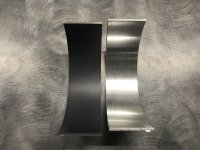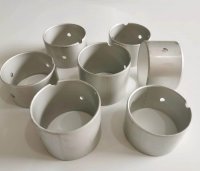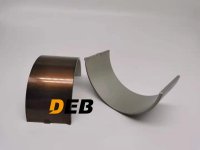Half copper and half aluminum engine connecting rod bearings are usually used in some engines with high requirements but want to control costs. They combine the advantages of copper and aluminum, and can improve performance while reducing costs. Commonly used in the following types of engines:
1. Diesel engines
Diesel engines, especially some mid-to-high-end commercial trucks or engineering machinery engines, often use half copper and half aluminum connecting rod bearings. Diesel engines have a large load and high requirements for wear resistance and high temperature resistance. Copper can provide good wear resistance, while aluminum helps to reduce weight and improve heat dissipation.
2. High-performance internal combustion engines
Some high-performance racing or sports car engines may also use half copper and half aluminum connecting rod bearings. The high temperature resistance of copper and the lightweight characteristics of aluminum make this design able to meet the needs of high speed and high load operation.
3. Some industrial engines
For example, engines used in generator sets, heavy machinery (such as excavators, bulldozers) and other fields will also use half copper and half aluminum connecting rod bearings. These engines require higher durability and heat dissipation performance, and the half copper and half aluminum design can take both aspects into account.
4. Some mid- to high-end car engines
In some mid- to high-end cars, especially those that need to balance power and fuel efficiency, the use of half-copper and half-aluminum connecting rod bearings may be to improve engine durability and optimize fuel efficiency.
Advantages:
• Wear resistance: Copper provides better wear resistance.
• Weight reduction: Aluminum helps reduce the weight of the connecting rod bearing, especially under high load conditions.
• Cost control: By combining the proportions of copper and aluminum, it is possible to reduce manufacturing costs while improving performance.




